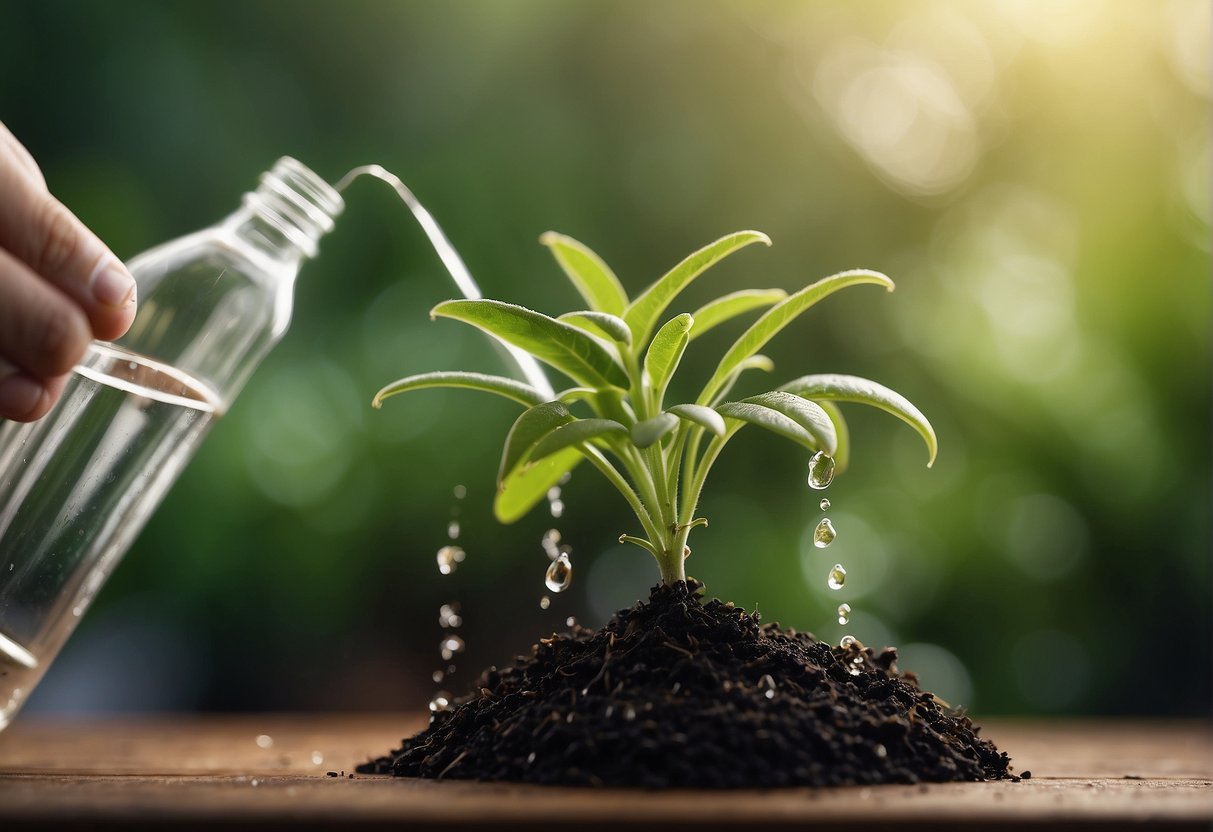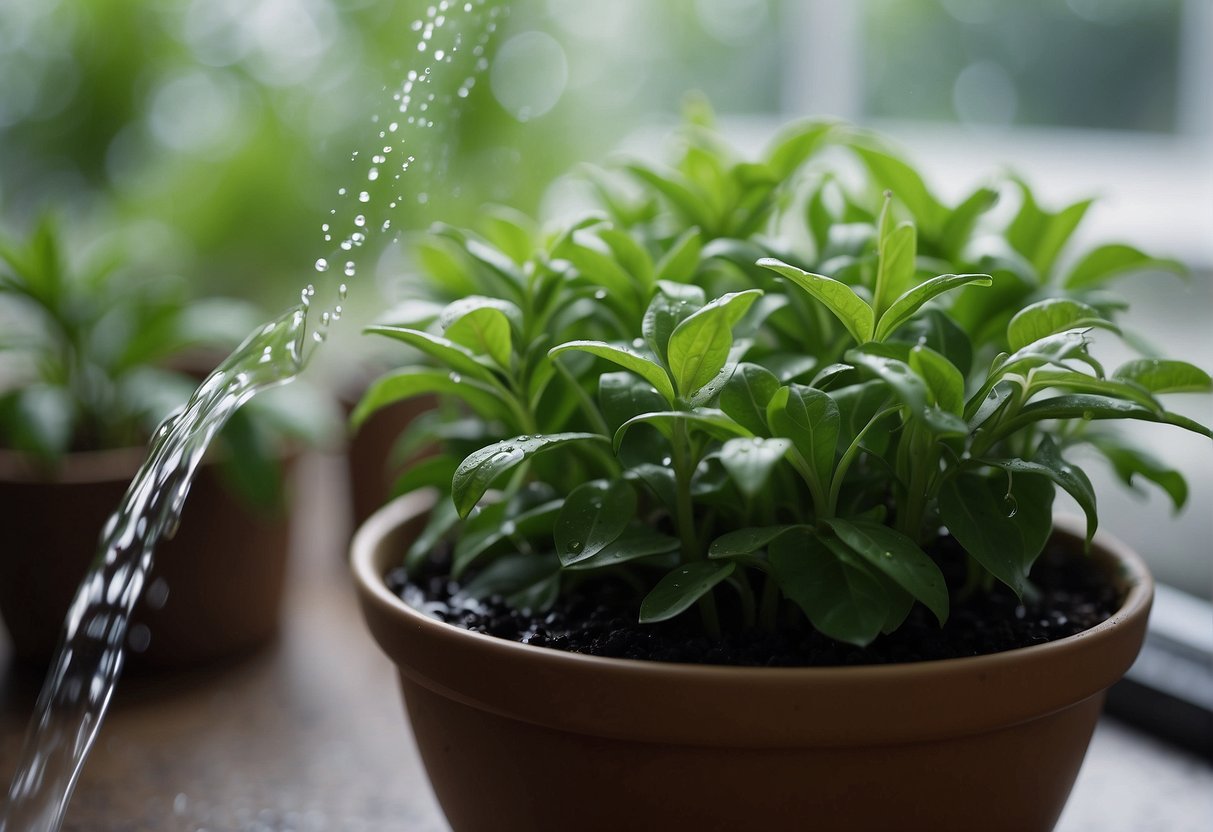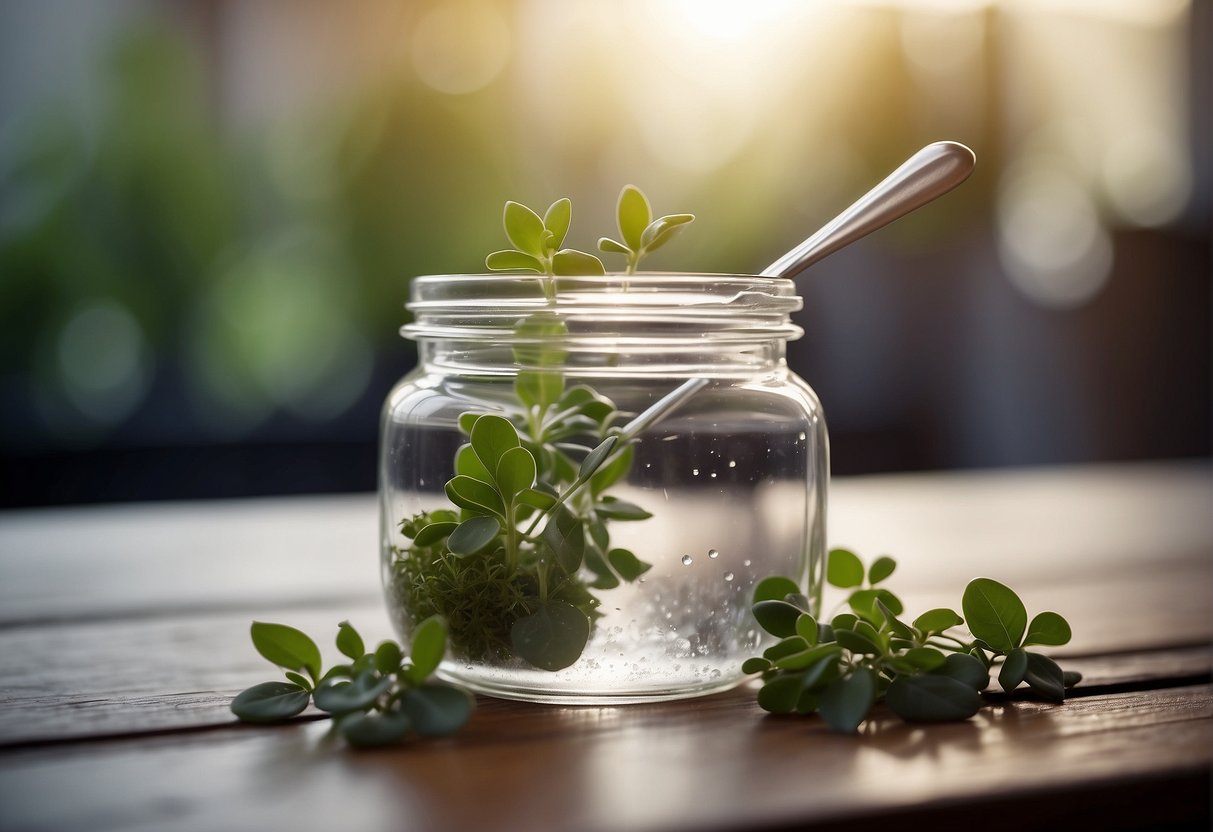Sugar Water for Transplant Shock: A Natural Solution for Plant Recovery
If you’re an avid gardener, you know that transplanting can be a tricky business. Even with the best care, plants can go into shock and struggle to adapt to their new environment. One solution that’s been touted as a way to mitigate transplant shock is sugar water. But does it actually work?

Sugar water has been shown to have some benefits in promoting plant health. When used in the right way, it can help reduce transplant shock and encourage root growth.
However, it’s important to use the correct dilution and avoid overuse, as too much sugar can actually damage roots and hinder plant growth. In this article, we’ll explore the role of sugar water in mitigating transplant shock and provide tips for preparing and applying it to your plants.
Key Takeaways
- Sugar water can be an effective way to reduce transplant shock and encourage root growth.
- Proper dilution is key to avoiding damage to plant roots.
- Monitoring plant health after transplant is important for ensuring long-term success.
The Role of Sugar Water in Mitigating Transplant Shock

When you transplant a plant, it can experience stress and shock due to the change in environment and the disturbance of its roots. This can lead to wilting, yellowing, and stunted growth. However, sugar water can help mitigate transplant shock and improve plant health.
Sugar water contains glucose, which is a simple sugar that provides energy to the plant and helps it recover from the shock of transplanting. When you water your plant with sugar water, it can absorb the glucose and use it to produce ATP, which is the energy currency of the cell. This can help the plant recover faster and reduce the risk of transplant shock.
To make sugar water for transplant shock, simply dissolve one tablespoon of sugar in one gallon of water. You can also add a few drops of seaweed extract or fish emulsion to provide additional nutrients and boost the plant’s immune system. Water your plant with this solution immediately after transplanting and continue to use it for the first few weeks to help the plant establish itself in its new environment.
Overall, sugar water can play a vital role in mitigating transplant shock and improving plant health. By providing the plant with glucose and other nutrients, you can help it recover faster and reduce the risk of stress-related problems.
Preparing Sugar Water for Plants

Sugar Water Recipe
Sugar water is a simple and inexpensive solution that can help plants recover from transplant shock. To make sugar water, you will need white granulated sugar and water. The ratio of sugar to water should be 1:4, which means one tablespoon of sugar for every four tablespoons of water.
To prepare sugar water, mix the sugar and water in a container until the sugar is dissolved. You can use warm water to help dissolve the sugar faster. Once the sugar is fully dissolved, let the mixture cool to room temperature before using it on your plants.
Application Methods
There are different ways to apply sugar water to your plants. One method is to water your plants with the sugar water solution. Use a watering can or spray bottle to apply the solution to the soil around the plant. Make sure not to overwater your plants, as this can cause more harm than good.
Another method is to dip the plant roots in the sugar water solution before planting. This can help reduce transplant shock and promote healthy root growth. To do this, fill a container with the sugar water solution and dip the roots of the plant in the solution for a few minutes before planting.
It is important to note that sugar water should not be used as a replacement for regular watering and fertilization. It should only be used as a supplement to help plants recover from transplant shock.
Applying Sugar Water to Transplants
When it comes to transplanting plants, one common challenge that many gardeners face is transplant shock. Transplant shock occurs when plants are moved from one location to another, causing stress and damage to their roots.
Applying sugar water to transplants is a natural remedy that many gardeners use to help reduce the effects of transplant shock. Here are some tips on how to apply sugar water to transplants.
Frequency of Application
To apply sugar water to transplants, mix one teaspoon of sugar with one-quarter of water. Water the transplants often while applying sugar water to drooping flowers.
However, it is important not to water wilting flowers that are under transplant stress. Overwatering can lead to root rot and other plant diseases. Therefore, it is recommended to apply sugar water once a week until the plants have fully recovered from transplant shock.
Best Time for Application
The best time to apply sugar water to transplants is in the morning or evening when the sun is not too intense. This helps to avoid burning the leaves and stems of the plant. It is also recommended to apply sugar water to transplants during the cool part of the day to prevent the water from evaporating too quickly.
In summary, applying sugar water to transplants is a natural remedy that can help reduce the effects of transplant shock. To apply sugar water to transplants, mix one teaspoon of sugar with one-quarter of water and water the transplants often while applying sugar water to drooping flowers.
Apply sugar water once a week until the plants have fully recovered from transplant shock. The best time to apply sugar water to transplants is in the morning or evening when the sun is not too intense, and during the cool part of the day to prevent the water from evaporating too quickly.
Additional Tips for Transplant Success
When it comes to transplanting your plants, there are a few additional tips you can follow to ensure success. Here are some suggestions:
- Water your plants before transplanting. This will help keep the roots moist and reduce transplant shock. It’s also a good idea to water your plants a few days before transplanting to ensure they are well-hydrated.
- Choose the right time to transplant. Transplanting during extreme weather conditions can increase the risk of transplant shock. It’s best to transplant when the weather is mild and there is less stress on the plant.
- Use a high-quality soil mix. A good soil mix will provide the necessary nutrients and drainage for your plants. You can also add organic matter such as compost to improve soil quality.
- Avoid over-fertilizing. Too much fertilizer can damage your plants and increase the risk of transplant shock. Follow the recommended dosage and frequency for your specific plant.
- Provide shade and protection. Newly transplanted plants are more vulnerable to sunburn and wind damage. Use shade cloth or row covers to protect your plants until they are established.
By following these additional tips, you can increase the chances of transplant success and help your plants thrive in their new environment.
Monitoring Plant Health After Transplant
Once you have successfully transplanted your plant and applied the sugar water solution, it is important to monitor its health regularly. Here are some tips for monitoring the health of your transplanted plants:
- Check the soil moisture: Make sure the soil is neither too dry nor too wet. Overwatering can cause root rot, while underwatering can cause the plant to dry out and wilt. Use a moisture meter or stick your finger into the soil to check its moisture level.
- Look for signs of stress: Plants can experience stress after being transplanted, which can manifest in different ways depending on the plant species. Look for signs of wilting, yellowing leaves, or stunted growth. If you notice any of these signs, adjust the amount of water, light, or nutrients the plant is receiving.
- Keep pests and diseases at bay: Transplanted plants are more vulnerable to pests and diseases, so it is important to keep an eye out for any signs of infestation or infection. Check the leaves, stems, and roots for any signs of damage or discoloration. Use organic pest control methods or consult a professional if necessary.
By following these tips, you can ensure that your transplanted plants remain healthy and thrive in their new environment. Remember to be patient and give your plants time to adjust to their new home. With proper care and attention, they will reward you with beautiful blooms and healthy foliage.
Frequently Asked Questions
What’s the best recipe for sugar water to help with transplant shock?
To make sugar water for transplant shock, dissolve one tablespoon of sugar in one gallon of water. This recipe provides the right balance of sugar to water that can help revive your plants. However, it’s essential to remember that sugar water should not be a long-term solution for your plants.
How can I treat my plants that are experiencing transplant shock?
If your plants are experiencing transplant shock, there are several things you can do to help them recover. First, you can use sugar water to help stimulate root growth and reduce stress.
Additionally, you can try using root stimulants or transplant shock fertilizers. It’s also crucial to maintain optimal environmental conditions for your plants to help them recover.
Can sugar water help revive my dying plants?
While sugar water can help revive plants that are experiencing transplant shock, it’s not a cure-all for dying plants. If your plants are already severely damaged or diseased, sugar water may not be enough to save them. In such cases, it’s best to consult a professional or consider other plant care options.
Are there specific plants that respond well to sugar water?
Most plants can benefit from sugar water when experiencing transplant shock. However, some plants may be more sensitive to sugar than others. It’s essential to research your specific plant’s needs before applying sugar water or any other plant care products.
How do you properly make sugar water for plant care?
To make sugar water for plant care, dissolve one tablespoon of sugar in one gallon of water. Ensure that the sugar is completely dissolved before applying it to your plants. It’s best to use room temperature water to avoid shocking your plants.
What are the effects of sugar water on plant growth and health?
Sugar water can help stimulate root growth and reduce stress in plants. However, it’s crucial to remember that sugar water should not be a long-term solution for plant care. Overuse of sugar water can lead to root rot and other plant health issues. It’s best to use sugar water in moderation and in combination with other plant care methods.






